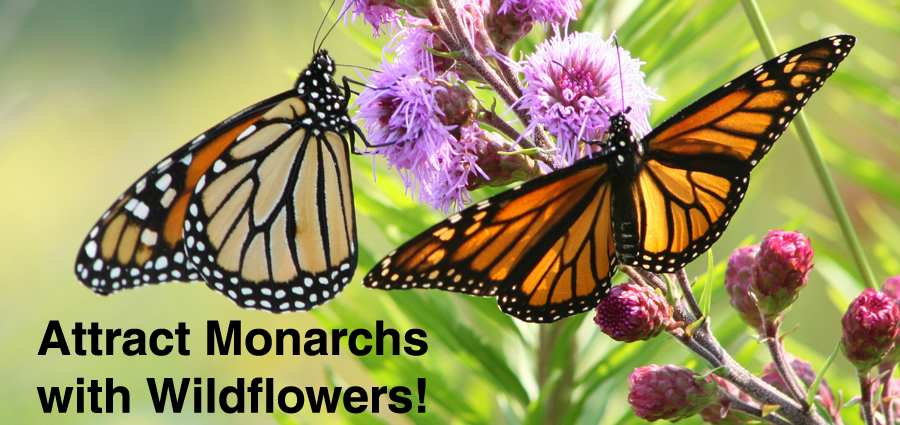|
The Monarch Butterfly has been in the news frequently and it has not been good news. Monarch populations have been on a long term decline for many years now. The number of Monarch butterflies making it to their winter refuge in Mexico has dropped to the lowest level since comparable record-keeping began over 20 years ago. There are now only one-fifteenth as many Monarchs now as there were in 1997. Experts have called the recent numbers "ominous."
Habitat loss due to development and the widespread use of toxic chemicals on farmlands and roadsides throughout their migratory path through the USA has seriously reduced the numbers of the native plants that are critical to the survival of Monarch butterflies.
Recently the connection between milkweed and monarch has become well known. Milkweed plants (Asclepias) are the exclusive host plants for the Monarch caterpillar. The adult butterfly lays its eggs on Milkweed plants and the caterpillars eat the leaves of milkweed and only milkweed to reach the next stage of growth and undergo the miraculous metamorphosis that allows an adult Monarch butterfly to come into existence.
But the adult Monarchs also require nectar sources - native plants that bloom from early summer to late fall. (Fall-blooming asters will help fuel their fall migration to Mexico.)
What has all this got to do with you? Simply put, it is an opportunity to be a part of a solution!
The 3-D film Flight of the Butterflies , does a beautiful job of explaining the Monarch's life cycle, its migration path, and the story of how scientists discovered the secrets behind Monarch migration. Towards the end of the film, a third-generation Monarch is heading south and looking desperately for a place to lay her eggs. She must find a milkweed plant or the next generation will be born into starvation. As she flies over acres of fields of chemically-treated corn she finds no milkweed to land upon, and begins to sink down to the ground, her life nearly over, her mission incomplete. But suddenly, on the horizon, a sub-division of houses appears. One of those homes stood out from the sterile boxes of evergreen yews that surrounded it. In that one sweet flowery haven, the butterfly landed on a milkweed. The butterfly laid her eggs, thus ensuring that the next generation would make it to Mexico and carry the life-cycle forward.
Which also gets us back to the current situation with milkweed, there are so many things we either have no power to change or very little power to change; but if enough people plant a variety of native plants in their yards and in their community spaces, we can provide enough biodiversity to preserve many things which are currently endangered, including Monarch butterflies.
You can make a difference!
Our "Monarch Favorites" list offers a wide selection of plants to support their life cycle, including both host plants and favorite nectar plants. And remember all of our seeds are hardy throughout North America and all are non-GMO.
|

